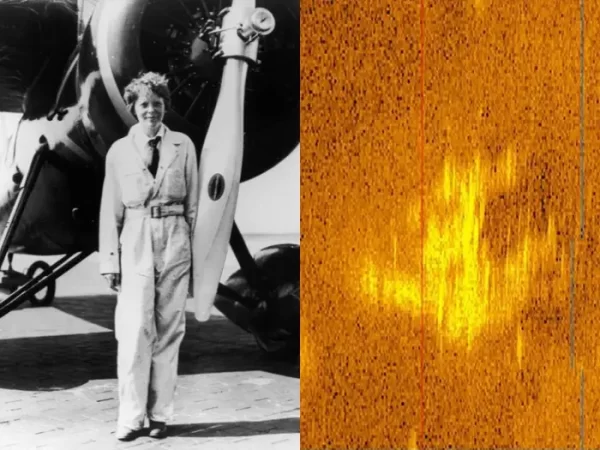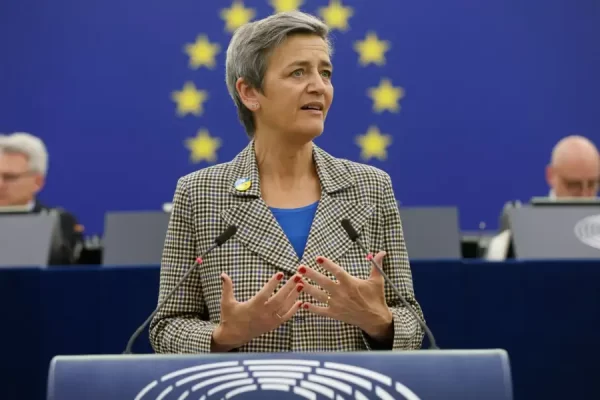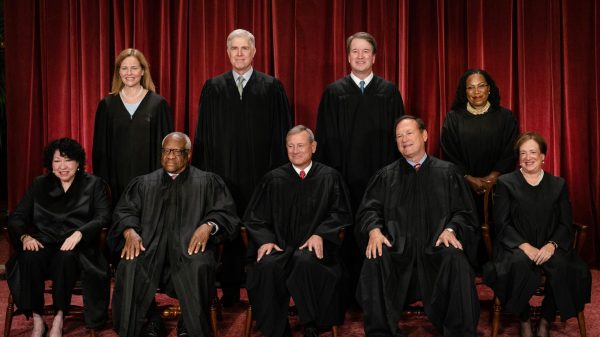New king reigns over the UK
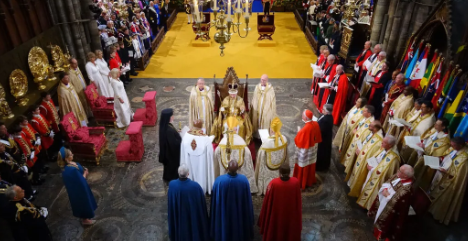
The coronation of King Charles III was held at Westminster Abbey in central London on May 6, 2023. (Ceres Post)
Prince Charles of Edinburgh was officially crowned the King of the United Kingdom (UK) on May 6, 2023.
The King’s coronation is an anglo-saxon tradition, dating back more than 1000 years ago, where monarchs formally ascended to the throne with royal ceremonial objects.
The procession took place at Westminster Abbey, a historical coronation church. The church was guarded with 160 armed service members known as the Guard of Honor, and 1000 personnel.
The Coronation Process:
The coronation began with the King and Queen Consort entering Westminster Abbey on the Diamond Jubilee State Coach. This stagecoach historically represents Queen Elizabeth II’s 60-year reign as a monarch.
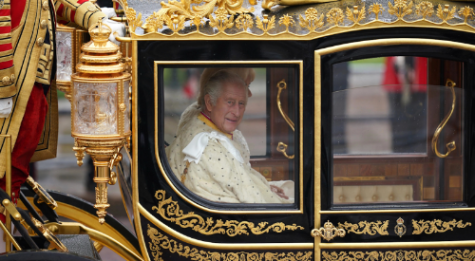
After the procession, the first stage of the coronation, known as the recognition, began. The King stood beside the Coronation Chair, a symbol of the monarchy, and was declared the “undoubted king.” Proceeding this, the congregation demonstrated their support by chanting “god save the king.”
After the chant, stage two of the coronation, the oath, commenced.
During this phase, the Archbishop of Canterbury recognized the different religions within the UK by stating the Church of England, “[seeks] to foster an environment in which people of all faiths may live freely.”
Then, he prompted the King to take a Coronation Oath, where he swore on the Holy Gospel he would abide by the law and the Church of England, and an Accession Declaration Oath where he promised he was Protestant.
Stage three, the anointing, of the ceremony, started with the King taking off his robe and sitting on the Coronation Chair. The Archbishop of Canterbury then poured oil from a golden flask called the Ampulla onto a spoon called the Coronation spoon and used it to form a cross on the King’s head, chest, and hands.
The investiture, or the official crowning of the King, took place in stage four. The King was dressed in a golden coat known as the Supertunica and given his regalia. This moment was followed by the ringing of bells, trumpets, and a gun salute.
The final part of the ceremony was the enthronement where people showed their support to the King. The Archbishop of Canterbury prompted the audience to say, “I swear that I will pay true allegiance to Your Majesty, and to your heirs and successors according to law. So help me God.”
The Queen followed this same process but was not mandated to take any oaths.
Royal Ceremonial Objects:
Throughout the ceremony the King and his wife, Queen Consort Camilla, were dressed in two customary robes, the Robe of State and the Robe of Estate, which honored past monarchs and followed royal tradition.
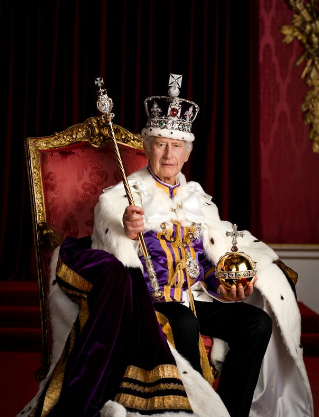
The King’s Robe of State was worn by King George VI, and the Robe of Estate was worn by Queen Elizabeth II.
The Queen Consort’s Robe of State was worn by Queen Elizabeth II, and her Robe of Estate was designed by the Royal School of Needlework.
Additionally, the King and Queen Consort were presented with regalia consisting of scepters, crowns, orbs, and jewels in order to symbolize their royalty.
The King carried The Sovereign’s Orb, The Sovereign’s Scepter with Cross, and the Rod of Equity and Mercy which represent Christianity, the power of a king, and spirituality.
The Queen Consort carried the Queen Consort’s Rod with Dove and the Queen Consort’s Scepter with Cross, also representing Christianity and power.
Furthermore, both monarchs were presented with crowns to mark their rule.
The King wore two different crowns. The St. Edward’s Crown, also known as the centerpiece of the Crown Jewels, was given to him during the moment of his crowning. The second crown was the Imperial State Crown and was originally made for Queen Elizabeth II and King George VI’s coronation.
The Queen was bestowed with Queen Mary’s Crown and added diamonds from Queen Elizabeth’s jewelry collection in order to pay tribute to the late monarch.
The controversy:
Around 2,200 people came to Westminster Abbey in support of the King’s coronation. These people included prime ministers, members of the royal family, faith leaders, and representatives of countries.
Despite this support, a number of UK citizens oppose the monarchy, viewing it as elitist, and would prefer a true republic to be established.
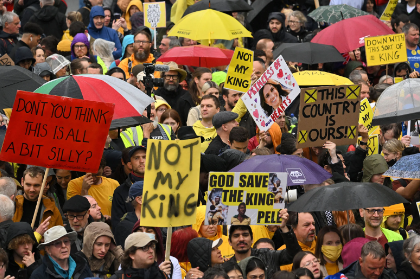
A Tweet from a UK citizen named Peter Tatchell stated, “I do not want to be a “subject” of the Crown. I am a citizen! I owe neither deference nor allegiance to a king who was imposed on me without my consent – or the consent of the British people, “ said UK citizen Peter…A Tweet from a UK citizen named Peter Tatchell stated,
This opposition resulted in protests from the anti-monarchy group, “No More Royals”.
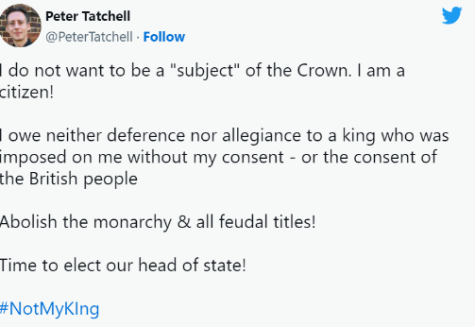
People from this group were arrested by the police for using extreme methods of protest
In response, an anonymous spokeswoman for the “No More Royals” group said, “If you can’t even hold a placard if you can’t even have a megaphone by your feet without getting arrested, then we might as well do things which aren’t allowed.”
The woman continued to explain these arrests could possibly spark more outrage against the King and Queen Consort.
Despite the contention over the validity of the monarchy, the coronation is a ceremony that holds historical significance to many.
“The coronation has traditional, religious, and symbolic significance,” said Nicoletta Gullace, an associate professor of history at the University of New Hampshire. “It is the moment the crown is placed upon the king’s head, and it signifies Charles’s authority in a long line of rulers ostensibly going back to the time of William the Conqueror in 1066.”

